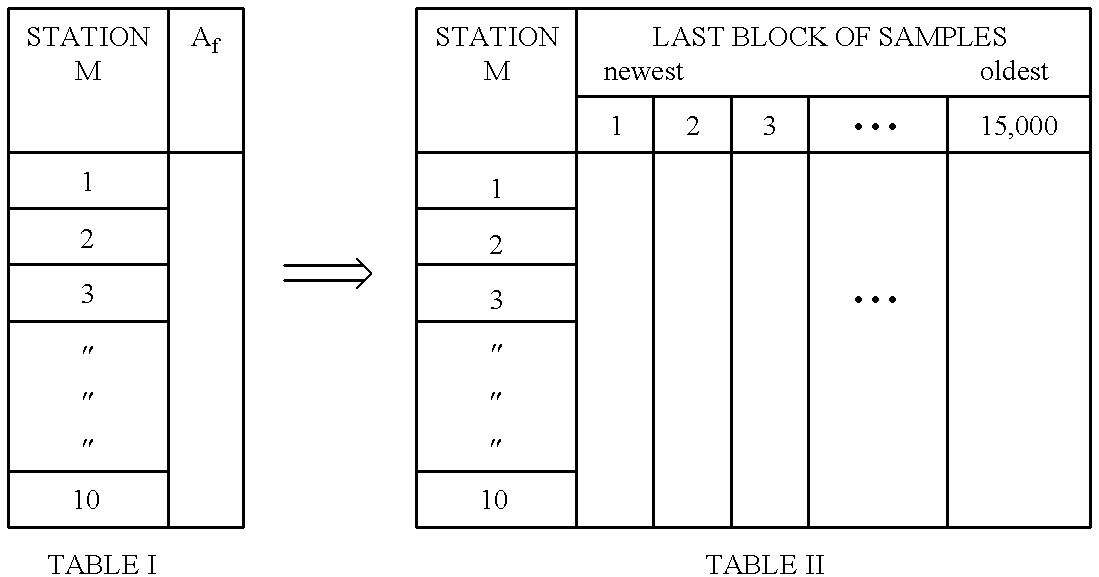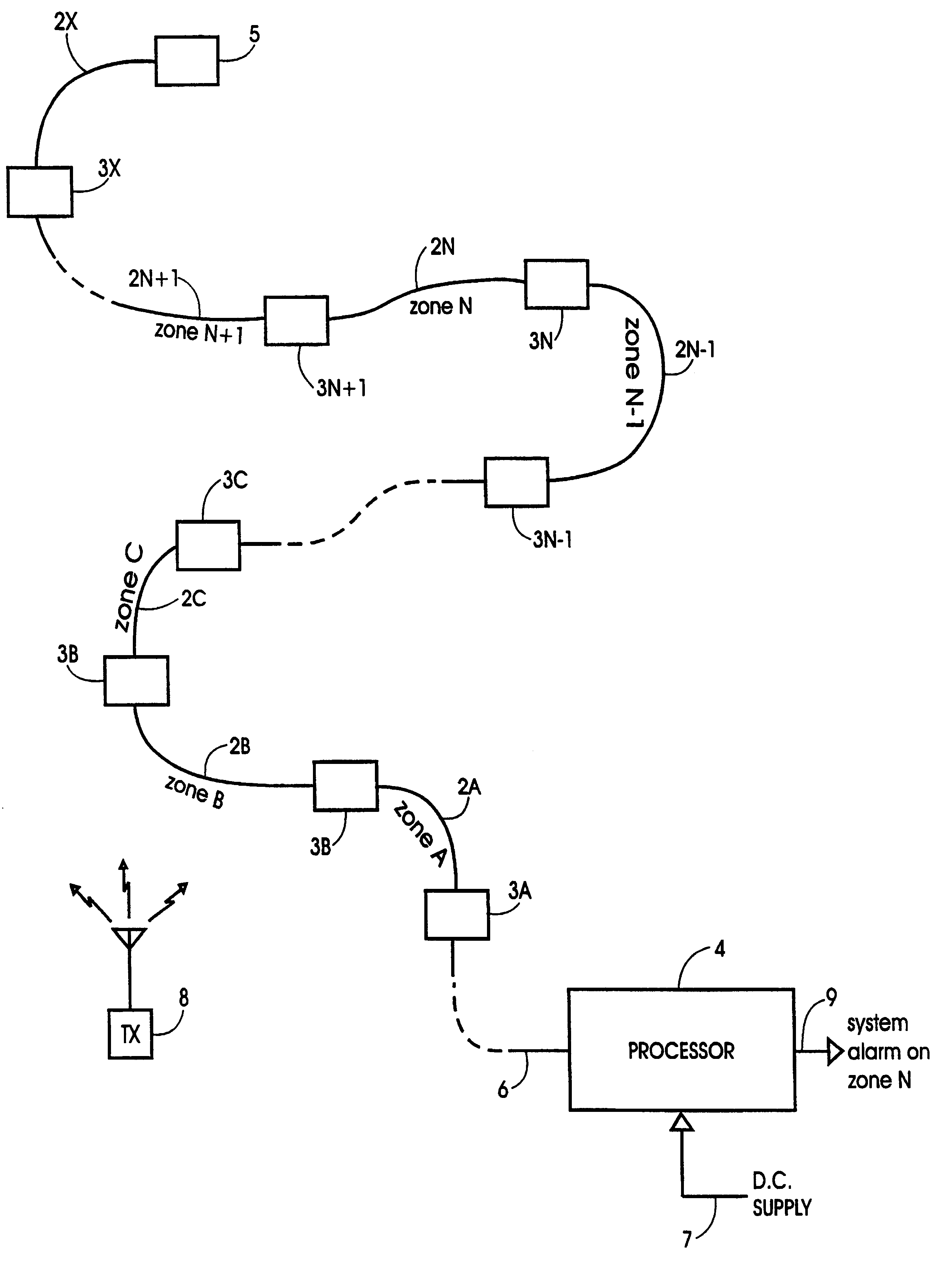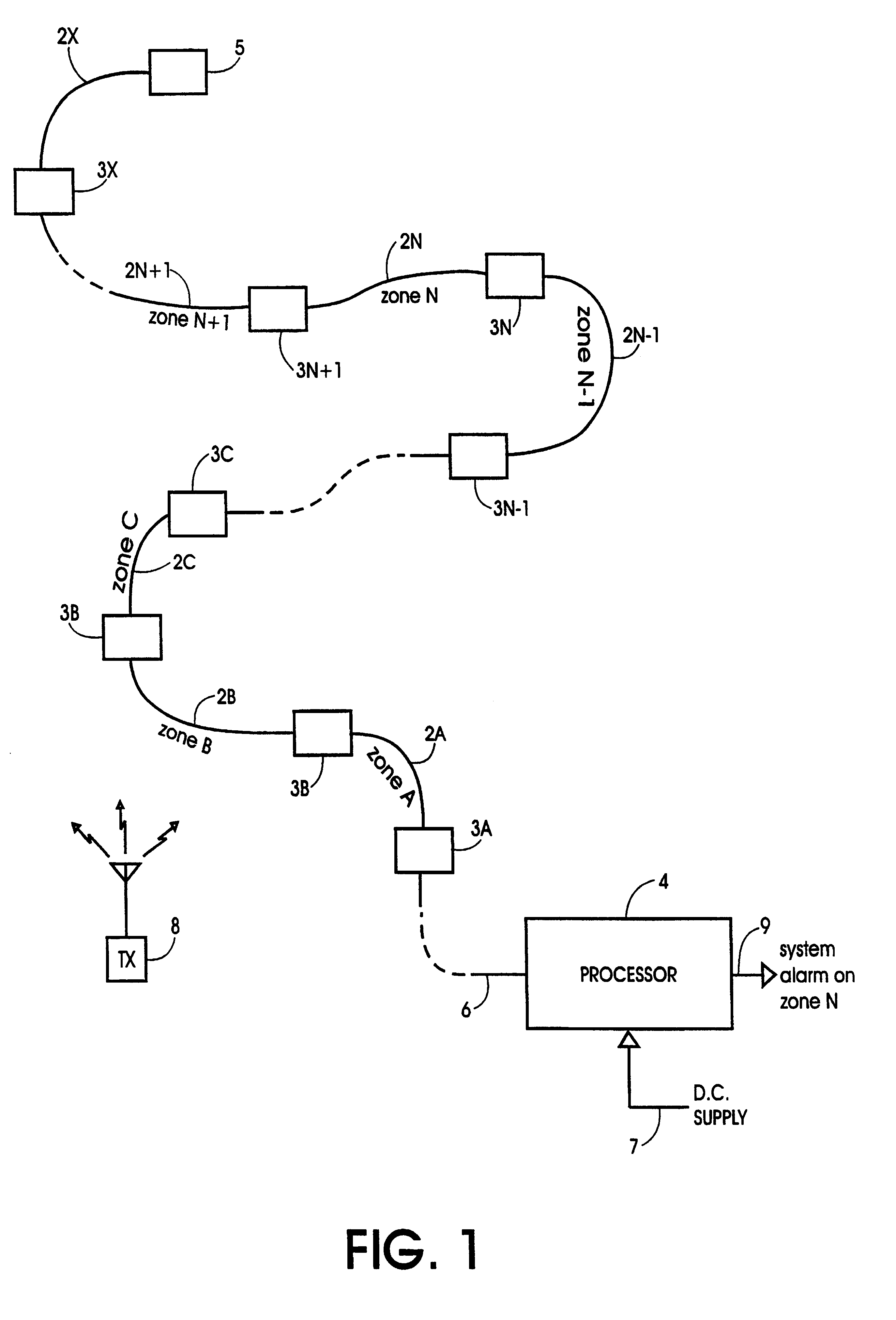Open transmission line intrusion detection system using frequency spectrum analysis
a technology of intrusion detection and frequency spectrum analysis, applied in the field of open transmission line intrusion detection system using frequency spectrum analysis, can solve the problems of increased likelihood of undetected intrusion, increased cost, and difficulty in setting sensitivity, and achieve the effect of being affordable yet reliabl
- Summary
- Abstract
- Description
- Claims
- Application Information
AI Technical Summary
Benefits of technology
Problems solved by technology
Method used
Image
Examples
Embodiment Construction
Referring first to FIG. 1, an intrusion detection system comprises a series of similar open transmission lines in the form of so-called "leaky" or "ported" cables designated 2A, 2B, 2C . . . 2N . . . 2X and receivers, designated 3A, 3B, 3C . . . 3N . . . 3X, connected in series between a common processor 4 and a termination load 5 to form, in effect, a linear bus defining a corresponding series of protection zones A to X. The cables 2A . . . 2X serve as sensors. The common processor 4 is connected to the first receiver 3A by a feedline 6 and connected to a DC power supply by line 7. The common processor 4 relays DC power to the receivers 3 by way of the feedline 6 and cable or cables 2. The final cable 2X is connected at one end to the termination load 5 and at the other end to receiver 3X. A separate transmitter 8 broadcasts FM radio signals which are received by the cables 2A . . . 2X. Preferably, the transmitter 8 is a commercial FM radio station transmitter broadcasting a multip...
PUM
 Login to View More
Login to View More Abstract
Description
Claims
Application Information
 Login to View More
Login to View More - R&D
- Intellectual Property
- Life Sciences
- Materials
- Tech Scout
- Unparalleled Data Quality
- Higher Quality Content
- 60% Fewer Hallucinations
Browse by: Latest US Patents, China's latest patents, Technical Efficacy Thesaurus, Application Domain, Technology Topic, Popular Technical Reports.
© 2025 PatSnap. All rights reserved.Legal|Privacy policy|Modern Slavery Act Transparency Statement|Sitemap|About US| Contact US: help@patsnap.com



